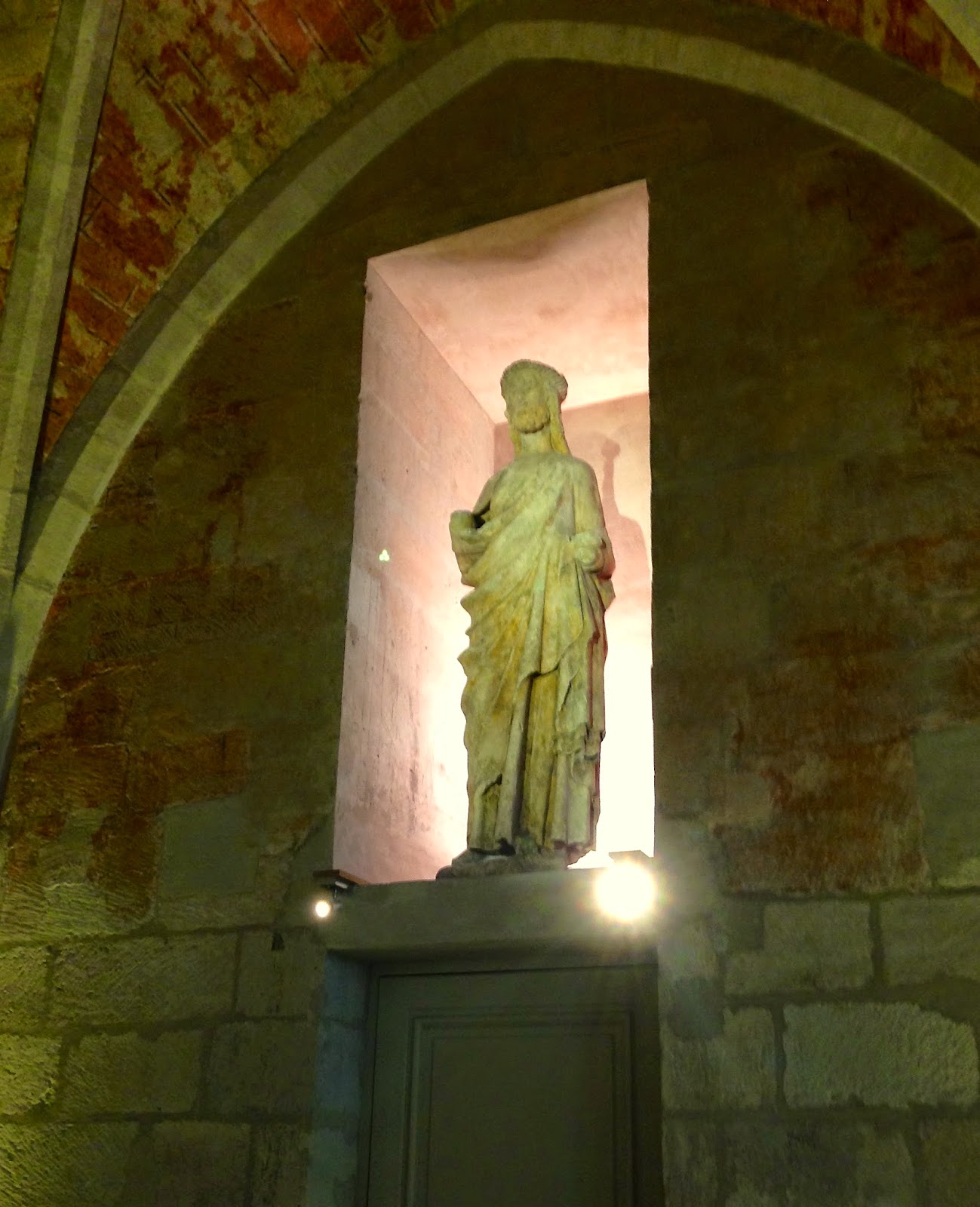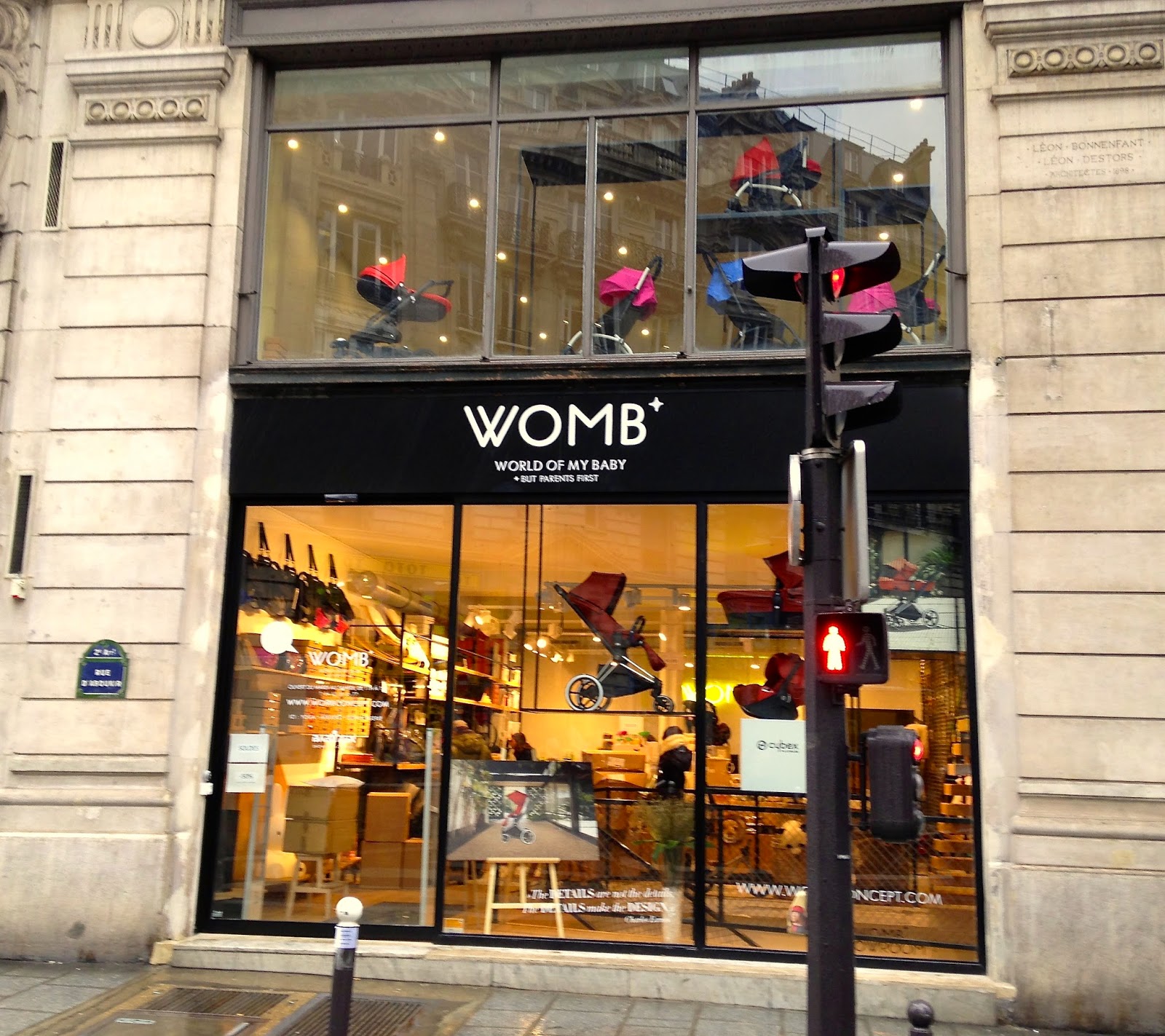Named for the Cistercian monk, Bernard, a nobleman from Burgundy who founded the Clairvaux monastery near Dijon in 1115, the college later became known, simply, as the Collège des Bernardins. It was Bernard who moved the Cistercian Order away from the Benedictines and their veneration of beauty, to a much more austere way of life, devoted to work, poverty and duty. Under his leadership, the Cistercian Order founded over 150 monasteries in rural settings all over Europe as well as in England, Scotland, Wales and Ireland.
The college building itself reflected this simple, austere view of life. The plans deliberately reduced the height of ceilings on both the upper and lower levels. At the same time, though, it became an important place of study and research, devoted to theology, philosophy and literature.
By the early 1700s the college and its gardens looked like this engraving from the period. An imposing church (never quite finished) was added in the 1300s. Over four centuries, many hundreds of students made their way from far-flung Cistercian monasteries to pursue their studies at the very heart of Christian thought, and to add their presence to the intellectual growth of the city of Paris.
At the time of the French Revolution the State took control of properties, and all further religious pursuits ceased. The college became a jail, a granary warehouse (just like Nôtre Dame!) and then for 150 years served as a fire station and, briefly, a police academy.
Flash forward to 2001, when, happily, the Diocese of Paris purchased the property from the City of Paris, and undertook a full renovation of the buildings that remained. In 2008, the newly restored Collège des Bernardins opened its doors to the general public for the first time in its history. When the American Women's Group of Paris offered a special tour a few days ago, I quickly signed up.
Our very courtly guide led us from the basement to the attic, painting a vivid picture of the history of the college from its beginnings.
The basement level floor had been filled with dirt and stones, to combat flooding from underground rivers flowing into the Seine.
The newly restored basement still reflects the lowered ceilings the Cistercians had insisted on back in the 13th century, but now there are sturdy foundations and trusses beneath it to prevent flooding.
During excavations, this wonderful piece of graffiti, scratched onto a stone, was unearthed -- the figure of one of the workers, probably dating from 1250!
In a stairwell stands another remnant, sadly headless...
...but this figure of Christ stands complete in a niche on the main floor.
On the main level, the nave presented a daunting task to the restorers. This is what it looked like in 2001!
Now it glows with newly-cut stone and beautifully restored original stonework. Here, the monks had their small study cubicles, separated by curtains, where they pursued their research and learning.
With its graceful arches and with the light flooding in, you could close your eyes and imagine the white-cowled monks moving silently among the pillars, heading for their desks and their precious books.
That love of learning has not left the Collège des Bernardins. The mission of this newly restored space is dedicated to the hopes of mankind, to the research and study of such topics as philosophy, biomedical ethics, human societies, Judaism and Christianity, the language of art. Exhibitions of contemporary art, along with music recitals, go hand in hand with debates, lectures, and seminars.
Up in the attic level of the building, a state-of-the-art auditorium provides the perfect venue for many of these activities...
...whilst on the floor, as you enter the auditorium, these extremely long, ancient oak beams remind you of the original structure and its remarkable history.
My own personal interest in the Collège des Bernardins stems from the fact that from age eight to eighteen I attended St. Bernard's Convent School for Girls, in Slough, England. Here, the patient Bernardine nuns (of the Cistercian Order!) did their best to knock some sense and learning into us -- wonderful plays by Shakespeare, the allure of geography, the drama of history, and, thankfully, a strong foundation in the French language, which has certainly stood me in good stead here in Paris! They even took a group of us to visit Pope Pius XII one summer -- yup, that's me, back row on the right, fourth in!
That was a long time ago! It's now the end of January, 2015, we are settling back into life on the rue Réaumur, jet lag is receding somewhat, and we are taking stock of changes in the city. We had expected to find much more of a police and military presence following the tragic events of January 7th, but so far have not been particularly aware of any great increase. The weather is cold and wet, with perhaps a promise of snow overnight. The inevitable array of old shops closing and new ones opening in our neighborhood continues -- this new one (dangerous for any grandparent) is at the corner of our building. That's WOMB - World Of My Baby!!
À bientôt!

.jpg)
















As always a fascinating blog
ReplyDeleteA marvelous beginning to your 2015 Parisian Chronicle....Beautifully told and supported by terrific images....Thanks for sharing!
ReplyDeleteHooray, you are back, thank you! Susan
ReplyDeleteLovely post, many thanks.
ReplyDeleteI love those arches, esp the short-legged ones in the basement. How lovely to have such a lovely building restored! hugs, Lyons
ReplyDeleteTrés intéressante cette visite, on ne s'imagine jamais tout ce que Paris recéle de trésors d'architecture, de secrets enfouis derrière des murs épais comme dans ce Collége !
ReplyDeleteMerci pour la visite !